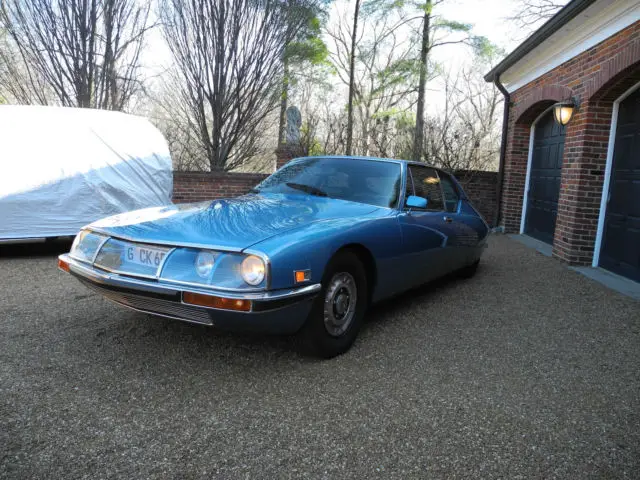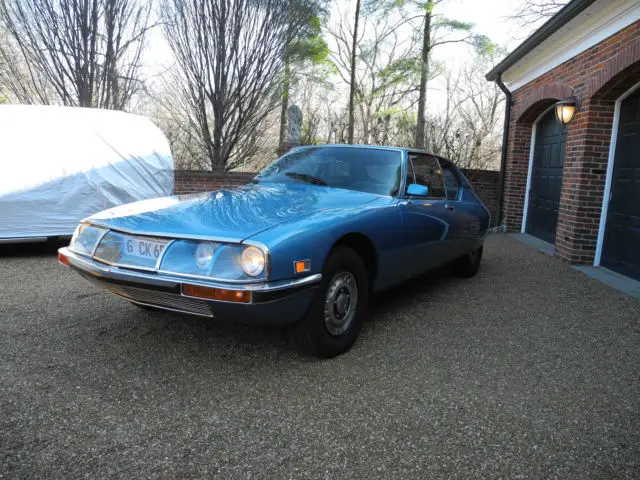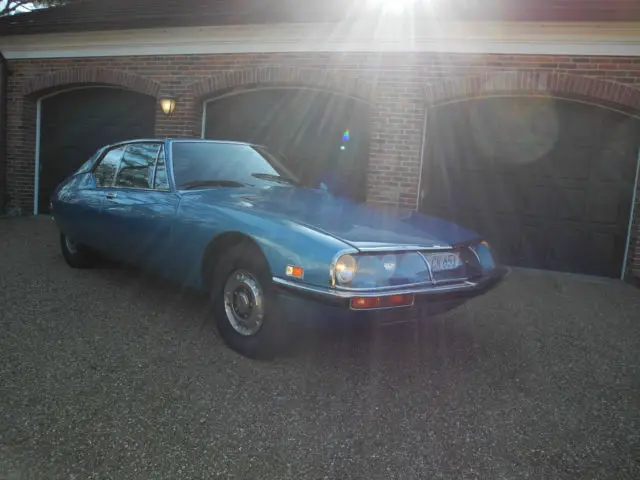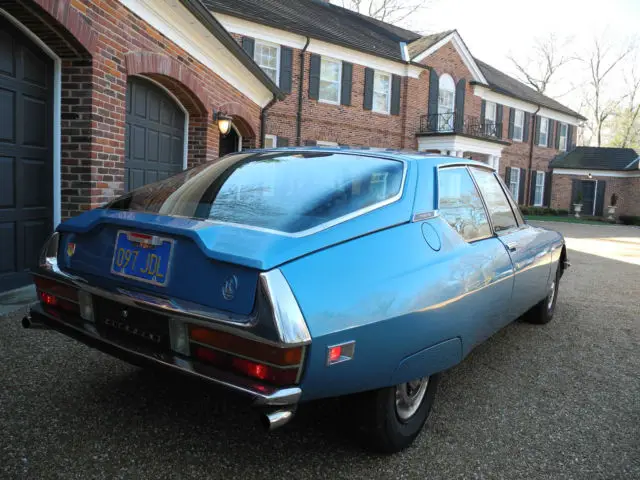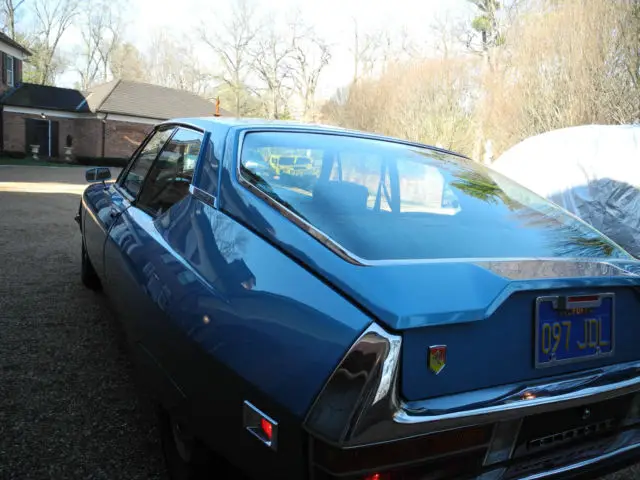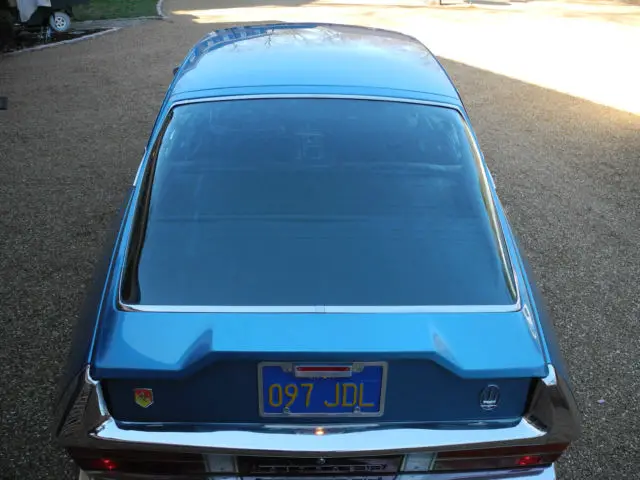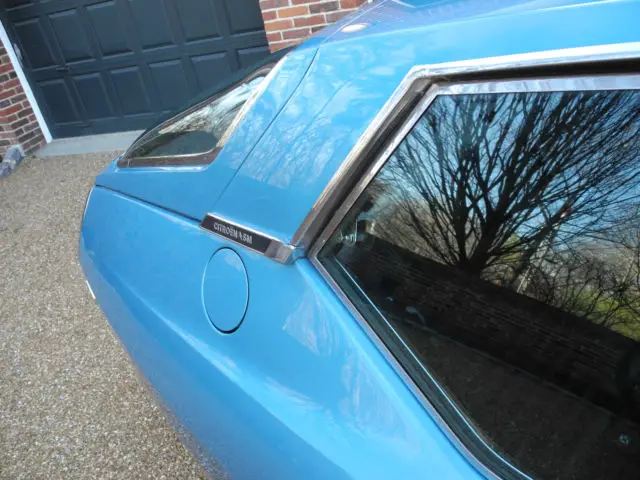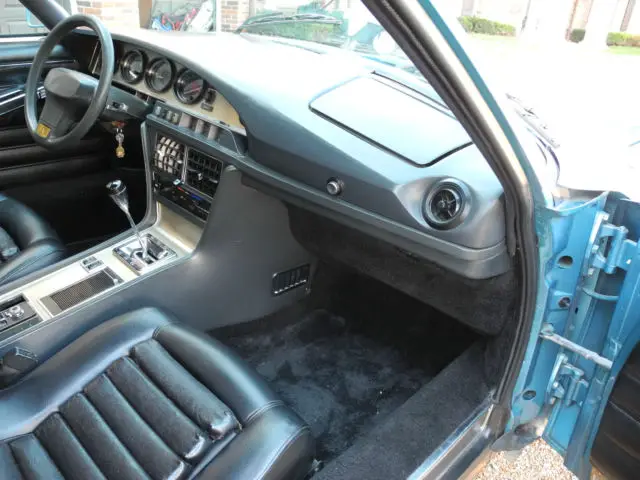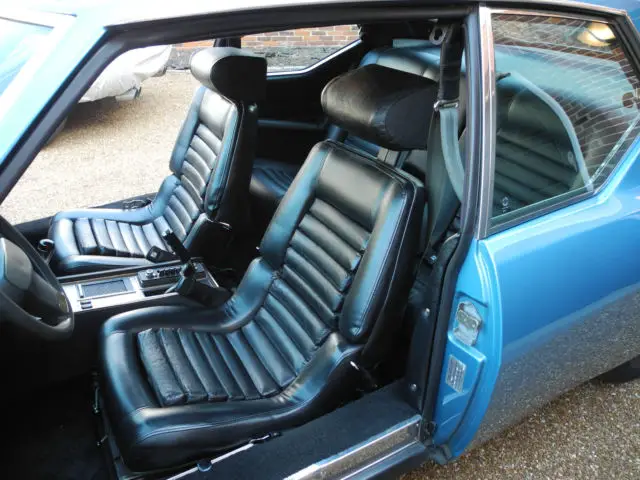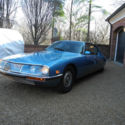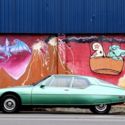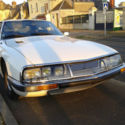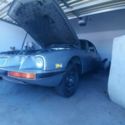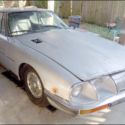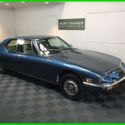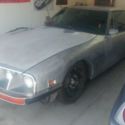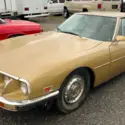Citroen SM Maserati 5 Speed Restored. Jerry Hathaway of SM World Assembled LoRe
| Make: | Citroën |
| Model: | Other |
| SubModel: | SM WORLD Jerry Hathaway Assembled and Sorted |
| Type: | 2 door |
| Trim: | SM 5 speed Maserati motor not ferrari |
| Year: | 1973 |
| Mileage: | 6,920 |
| VIN: | 00sd0265 |
| Color: | Blue |
| Engine: | V 6 |
| Cylinders: | 6 |
| Fuel: | Gasoline |
| Transmission: | 5 speed |
| Drive type: | 5 speed |
| Interior color: | Black |
| Vehicle Title: | Clear |
| Item location: | Saint Louis, Missouri, United States |
1973 Citroën Other SM WORLD Jerry Hathaway Assembled and Sorted Additional Info:
Hello,You are viewing my 1973 Citroen SM that has been restored.
The first owner was aphysicianfrom California who enjoyed andfanaticallymaintainedthe car for 32 years.
The second owner, lso from California purchased and restored the car in 2004. He had the carcompletelydisassembled. Doors, ood, runk, umpers, ll trim, lass and rubber were removed, nd then stripped painted base clear.
He then took thefreshlypainted pieces to SM World, nd Jerry Hathaway reassembled the car with new rubber seals and polished bumpers and trimpieces.
Jerry also sorted the car mechanically, ome items are new exhaust manifolds, very rare anti roll dampeners (I was told that he did this modification on only a few cars that includes JayLeno'sSM),Jerry'sproprietaryignition system, tarter rebuilt, arbs rebuilt, iming chain and valves adjusted, indow gears, ccumulator spheres,Europeanfront headlight covers, nd much much more (please call for more details if you are a interested bidder 314 649 7 six six six). I have over 25,000.00 inreceiptsfrom SM World, hat does not include the cost of the paint, artsand the restored interiorthat the 2nd owner supplied. This was all done about 6000 miles ago.The interior wasrestoredwith new carpets, eadliner, nd the seatsprofessionalrecovered. The dash is original and perfect.
The third owner (2008) purchased it to resell. My friend in St.Louis Missouri purchased it in 2008.
I (4thowner) purchasedit from him last year. We are both car collectors and this car was always stored in a climate control garage.This car is perfect! Drives and shifts smooth. This is my 2nd and by far the best SM I haveexperienced (and one of the best, orted, estored SM's out there)The only thing that does not work is the clock.In the past 600 miles we both have had the car serviced by the same Citroen expert in St.Louis Mo (a pre-purchase inspection is welcomed). Some of the work that was performed,alternator rebuilt, ajor service includes the changing of all fluids,including flushing the green LHM fluid and replacing,re toqueexhaust manifolds, eplace intake manifold O-rings, onvert AC to 134a, eplace air horns, eplace rear suspension strut boots, une up with new plugs, ydraulic pumpoverhaul, ew tires and much more ....
Last week I had the timing chain checked and changed the oil.
Steering returns to center, pproximately 39 second pump cycle time.
Included with the sale, alifornia registrations 1974-2004,maintenancereceipts, riginal folding key, ooks and manuals, pare and jack, ools, riginal air cleaner, riginal California blue plate that came registered to the car in 1973.
This car drives and looks as new.Please see the following of the car driving youtube.com/watch?v=V_sJhwTA27U Suspension raising and lowering at idle youtube.com/watch?v=pK7HkzDNIpQ
I rarely check my email so please call me at 314 649 7 six six six for all serious inquiries.
Thank you
See some history below if you are not familiar with the SM.
TheCitroën SMis a high-performancecoupéproduced by the French manufacturerCitroënfrom 1970 to 1975. The SM placed third in the 1971European Car of the Yearcontest,trailing its stablemateCitroën GS, nd won the 1972Motor Trend Car of the Yearaward in the U.S. in 1972.
History[edit]
In 1961, itroën began work on 'Project S' — a sports variant of the revolutionaryCitroën DS. As was customary for the firm, any running concept vehicles were developed, ncreasingly complex and upmarket from the DS.[2]Citroën purchasedMaseratiin 1968 with the intention of harnessing Maserati's high-performance engine technology to produce a trueGran Turismocar, ombining thesophisticated Citroën suspensionwith a MaseratiV6.[3]
The result was the Citroën SM, irst shown at theGeneva Motor Showin March 1970. It went on sale in France in September of that year. Factory produced cars were all left-hand-drive, lthough RHD conversions were done in the UK and Australia.
The origin of the model name 'SM' is not completely clear. The 'S' may derive from the Project 'S' designation, he aim of which was to produce what is essentially a sports variant of theCitroën DS, nd the 'M' perhaps refers to Maserati, ence SM is often assumed to stand for "Systeme Maserati" or "Sports Maserati". Another common alternative isSérie Maserati,[4][5]but others have suggested it is short for 'Sa Majesté' (Her Majesty in French), hich aligns with the common DS model's nickname 'La déesse' (The Goddess).
The SM was Citroën's flagship vehicle, ompeting with other high-performance GTs of the time from manufacturers such asJaguar,Lotus,Ferrari,Aston Martin,Alfa RomeoandPorsche.Francehad not had a production vehicle in this segment afterWorld War II, xcept for the export orientedChryslerV8 engineFacel Vegain the late 1950s.[6]The thriving French luxury car industry was decimated by post-World War IIpuissance fiscaleregulation, hich has hamstrung French manufacturers for decades.
The SM did not find a sufficient customer base in the European GT market, ut much of the SM's technology was carried forward to the successfulCitroën CX, aunched in 1974theDIRAVIsteering being the most obvious example. The same basic engine in enlarged 3.0L form (some in Italy had 2.0L) was used in Maserati's ownMerak(1,800 units) and later with some modification in theBiturbo(40,000 units).[7]The Merak,Khamsin, ndBora, sed Citroën's high-pressure hydraulics for some functions, nd the Citroën gearbox in the Merak, uring the Citroën-Maserati alliance.
Performance[edit]Contemporary automotive journalists were effusive about the SM's dynamic qualities, hich were unlike anything they had experienced before.[8]The SM provided a combination of comfort, harp handling, nd braking not available in any other car at the time.[9]The magazinePopular Sciencenoted that the SM had the shortest stopping distance of any car they had tested.[10]
Automotive journalists marveled at the resulting ability to travel for hours at 200km/h (120mph) in comfort.[11]In 1972Motorsport(U.K.) noted ..."that rare quality of being a nice car to be in at any speed, rom stationary to maximum."[12]The touring range based on the SM's fuel economy and the large 90l (20impgal; 24USgal) fuel tank made long, ast, elaxing journeys possible.[13]
Because the SM had a small 170PS (130kW) engine, he acceleration was adequate rather than exemplary - some competitors were quicker. Some owners have fitted the similar sized 220PS (160kW)Maserati MerakSS engine, hich does improve the driving experience considerably.[14]
Fuel consumption compares favorably to most competitors.
Performance against competitorsMake & ModelHorsepower'SAE net'Top SpeedAcceleration0 to 60 mphFuel EconomySM| 170PS (130kW) | 220km/h (140mph) | 8.5 sec | 8km/l (23mpg-imp; 19mpg-US)[15] |
